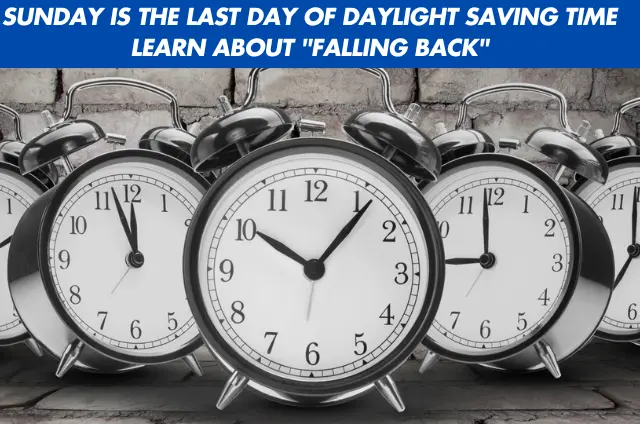It is time to go back in time, whether you like it or not. When daylight saving time expires on Sunday at 2 a.m., here are some things you should know.
Now is the time to retreat once more. On Sunday morning, as daylight saving time ends once more, the clock will strike at 1 a.m. twice. Learn about daylight saving time and the reasons behind the twice-yearly clock changes in the United States.
When is the end of daylight saving time?
Daylight saving time starts on 10th of the March and ends on November 3. On Sunday, we will gain an additional hour, with clocks going from 1:59 a.m. back to 1 a.m., in contrast to the spring, when we lose an hour and the clocks completely miss the 2 o’clock hour. As the temperatures continue to drop and we enter the late autumn and winter months, the sun will begin to set earlier across the United States.
What is causing this?
The U.S. Astronomical Applications Department says the practice, which was created by the Standard Time Act in 1918, is an attempt to push back sunset by one hour, increasing the amount of daylight we enjoy throughout the summer. The controversial concept of daylight saving time was swiftly repealed in 1919, turning it into a municipal issue. According to the agency, it was recounted in the early stages of World War II and was witnessed between 1942 and 1945.
After the war, different states implemented daylight saving time differently until 1966, when the Uniform Time Act was passed, standardizing the dates of DST but allowing for local exemptions if states or localities choose not to participate.
Since 2007, daylight saving time has begun on the second Sunday in March and concluded on the first Sunday in November, while the government claims that the standardized start and end dates have altered over time.
Read: Halloween Tragedy: The Orlando Shooting Left 2 People Dead and 6 Injured
What is the duration of standard time?
The U.S. will continue to observe standard time, which will result in darker evenings and earlier sunsets until spring arrives and daylight saving time is reinstated. In 2025, daylight saving time begins on Sunday, March 9, and ends on Sunday, November 2, at which point the cycle is repeated.
Is there a state that does not observe?
According to the Astronomical Applications Department, Hawaii and the majority of Arizona do not switch their clocks twice a year since they do not follow daylight saving time.
Does this only happen in the United States?
According to the department, the majority of nations observe some form of “summer time.” The majority of the Northern Hemisphere’s daylight-saving time-observing nations are in North America and Europe. While some other nations observe daylight saving time, they do not all follow the same timetable as the United States.
What actions are being made to put an end to this practice?
The Sunshine Protection Act, implemented by the U.S. Senate in March 2022, would end the practice of changing our clocks and establish daylight saving time as a permanent year-round regulation.
Hawaii and the majority of Arizona would maintain year-round standard time under the bill. The United States will continue to follow the time change until the law is passed by the House of Representatives and signed by the current president, however, it has now stopped in that body. According to the National Conference of State Legislatures, 20 states have enacted resolutions or measures to adopt year-round daylight saving time in the past six years, and nearly all states have explored legislation to maintain standard daylight saving time. However, the states would have to wait for Congress to pass the bill before they could implement the change because federal law presently prohibits year-round daylight saving time.
What are the opinions of health experts?
Using daylight saving time all year round may lower the incidence of traffic accidents and crimes, according to certain studies. However, some experts oppose changing daylight saving time permanently. This is because, according to sleep specialists, the sun should reach its zenith in the sky at noon, a time known as solar time. During daylight saving time, persons in the U.S. central time zone are pushed further away from solar time, whereas, during standard time, they are precisely aligned with it.
According to NBC News in 2022, Dr. Karin Johnson, a professor of neurology at UMass Chan Medical School-Baystate and a board member of Save Standard Time, a group that promotes permanent standard time, stated that the greater the discrepancy with solar time, the greater the likelihood. The clocks’ oscillations are preferred by sleep experts over permanent daylight saving time. In 2022, Dr. Kin Yuen, a sleep medicine specialist at the University of California, San Francisco, and a fellow at the American Academy of Sleep Medicine stated that people may feel more drowsy when they wake up as a result of greater levels of hormones like cortisol.
During daylight saving time, people may sleep longer because the sun sets later, which might lead the body to produce less melatonin. Additionally, according to a June 2022 study, vehicle fatality rates were 22% higher for those whose clock hours were not precisely synchronized with the sun than for those who lived within 30 minutes of solar time.

